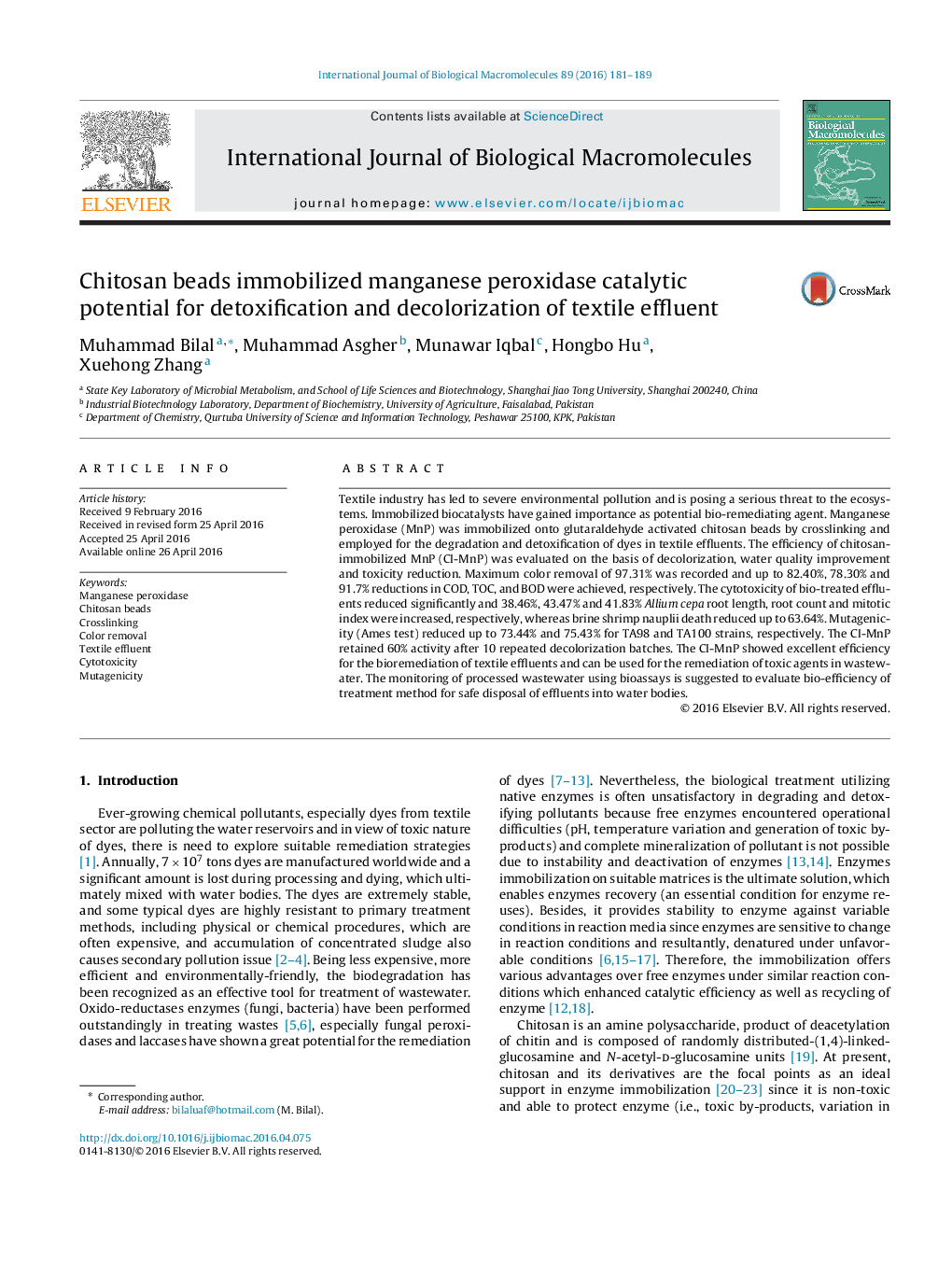| Article ID | Journal | Published Year | Pages | File Type |
|---|---|---|---|---|
| 1985719 | International Journal of Biological Macromolecules | 2016 | 9 Pages |
Textile industry has led to severe environmental pollution and is posing a serious threat to the ecosystems. Immobilized biocatalysts have gained importance as potential bio-remediating agent. Manganese peroxidase (MnP) was immobilized onto glutaraldehyde activated chitosan beads by crosslinking and employed for the degradation and detoxification of dyes in textile effluents. The efficiency of chitosan-immobilized MnP (CI-MnP) was evaluated on the basis of decolorization, water quality improvement and toxicity reduction. Maximum color removal of 97.31% was recorded and up to 82.40%, 78.30% and 91.7% reductions in COD, TOC, and BOD were achieved, respectively. The cytotoxicity of bio-treated effluents reduced significantly and 38.46%, 43.47% and 41.83% Allium cepa root length, root count and mitotic index were increased, respectively, whereas brine shrimp nauplii death reduced up to 63.64%. Mutagenicity (Ames test) reduced up to 73.44% and 75.43% for TA98 and TA100 strains, respectively. The CI-MnP retained 60% activity after 10 repeated decolorization batches. The CI-MnP showed excellent efficiency for the bioremediation of textile effluents and can be used for the remediation of toxic agents in wastewater. The monitoring of processed wastewater using bioassays is suggested to evaluate bio-efficiency of treatment method for safe disposal of effluents into water bodies.
